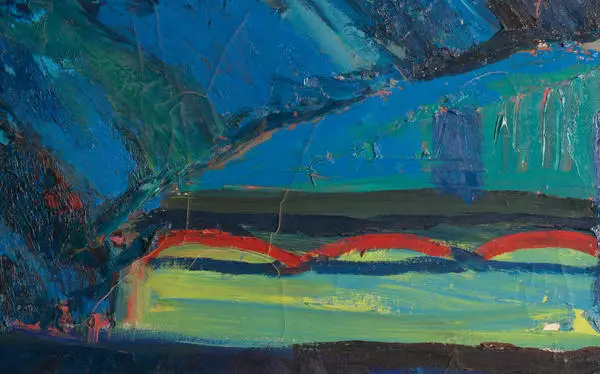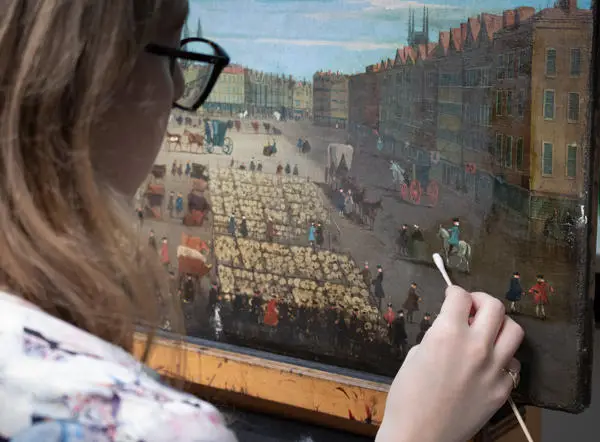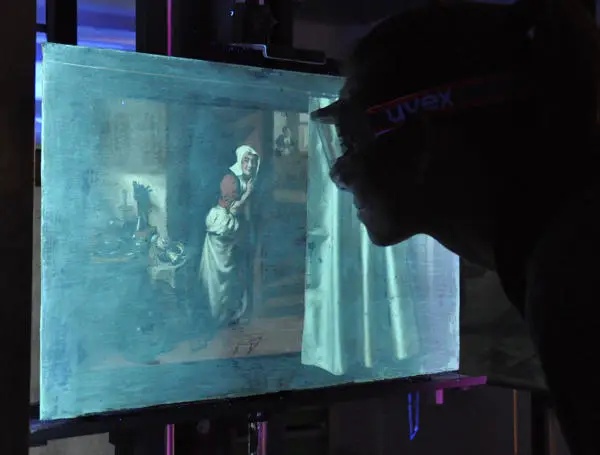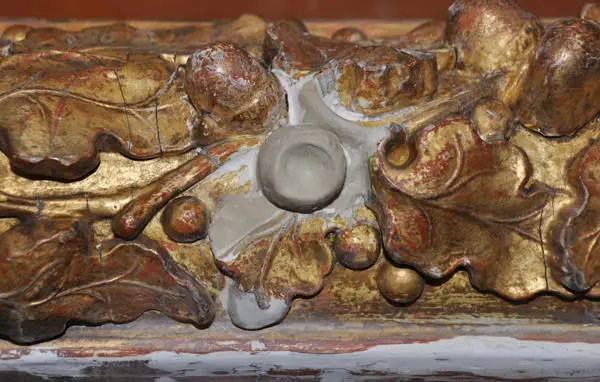Conservation
The Gallery has two painting conservators and a frame conservator working in studios on site to care for the 4500 works in the collection. The conservation of paintings and frames can take many months and requires extensive practical skills as well as an in-depth knowledge of the original materials and methods used in the production of the artwork.

Preventive conservation
An important role of the conservation staff is to make sure light and relative humidity levels are safe for the Collection, as well as monitoring and recording the condition of the paintings and frames in the Gallery. Preventative conservation involves taking steps to prevent future deterioration by using appropriate measures such as fitting glazing and back boards to frames.

Preparing paintings for exhibitions and loans
As well as displaying our own paintings the Gallery lends paintings to other institutions for exhibition. Each artwork must be carefully assessed to make sure it is safe to travel, and any necessary treatment carried out. We sometimes courier the artwork to ensure its safe transit to other museums and galleries around the world. When we lend items to exhibitions we often take the opportunity to rehang our walls. This means that we are constantly preparing works in storage to make them suitable for display and rethinking the ways in which we can bring items in the Collection back into the public eye. The lending process is vital to keep works of art circulating and to give people a chance to see new things.

Conservation treatment of paintings
Each painting identified as requiring conservation treatment is carefully examined and treatment recommendations are discussed with the Gallery’s curators. The condition of every painting is fully documented, including extensive photography. We use technical examination methods such as infrared light, ultraviolet light, a stereomicroscope and microscopic analysis of tiny samples of the paint layers, to inform our treatment decisions. These methods allow us to discover important information about the materials and techniques used by the artist. This can help resolve problems encountered during treatment, as well as providing fascinating insights into an artist’s practice.
Treatments of paintings can include removing discoloured varnish and old retouching, consolidating loose paint, filling and retouching losses, and re-varnishing. Where the painting support is weak or damaged, treatment may involve the repair of tears in the canvas or the addition of extra support in the form of a lining canvas.

Conservation treatment of frames
The Gallery is home to many fine period picture frames. Our specialist Frame Conservator preserves and restores the frames in the collection, many of which are original to the paintings that they surround. Sadly, many frames in the past have endured injudicious treatments, in these instances technical analysis is used to identify the original materials and methods that were used in the frame’s construction and guide the course of treatment.
Conservation treatment of a frame may address structural issues or involve the removal of later surface coatings, fixing flaking gilding, replacing lost ornamentation by casting or carving and reintegrating wear and losses in the gilding.

Our responsibility
We recognise that we are merely the temporary custodians of our Collection and we take the responsibility for its care very seriously. To this end the Painting and Frame Conservators are professionally trained and their work is accredited. They work closely together and with the Gallery’s curators to ensure that the collection is preserved in the best possible condition for the public to enjoy today and for many generations to come.